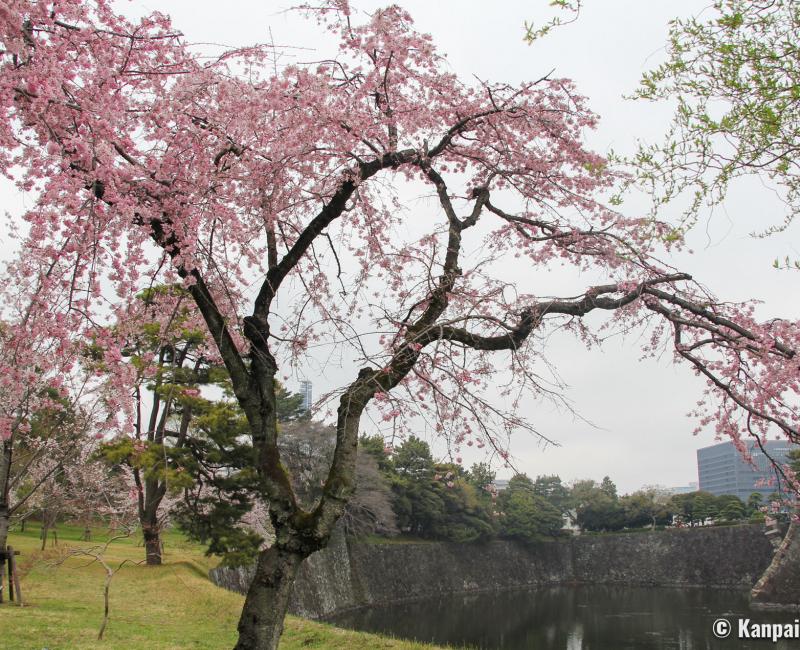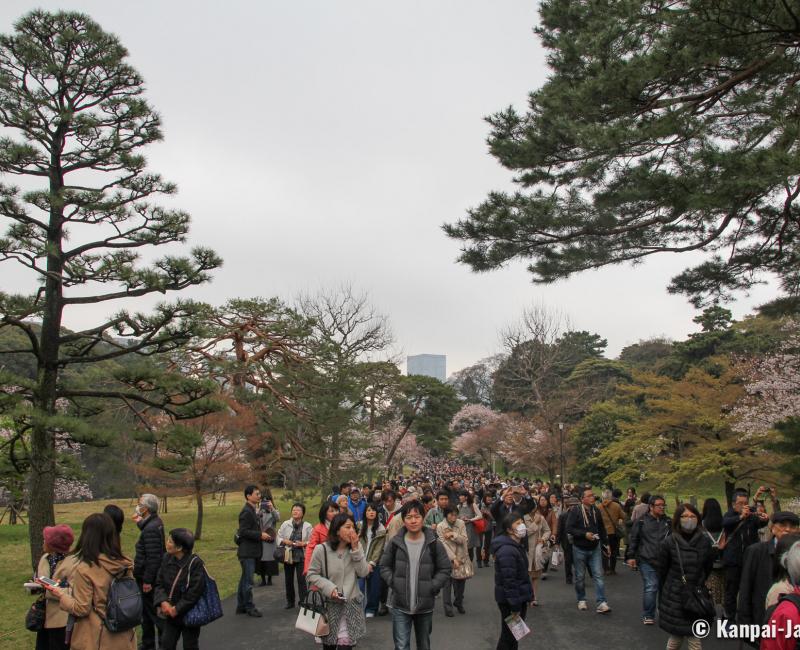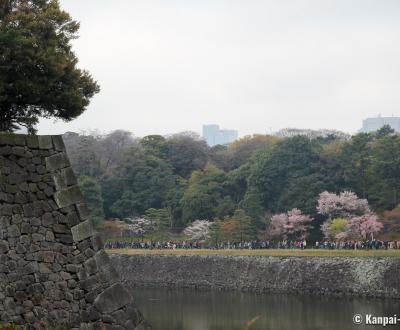Inui-dori
The Cherry and Maple Trees’ Imperial Alley in Tokyo
Inui-dori is a walking path in Tokyo Imperial Palace grounds opened to the public only a few days per year in spring and in autumn. This 600-meters long part of the Imperial Gardens is renowned for the many cherry trees and Japanese maple trees growing along its wide moats. Due to the occasional opening, the crowd is quite important.
Located between the Imperial Palace’s buildings and the East Gardens, Inui-dori walking path is an exceptional walk despite its short span: less than one kilometer. Visitors come in great number and impressively crowd the access plaza. However, the flow of visitors is perfectly channeled and smoothly progresses without an excessive waiting time.
Inui-dori is on the Emperor of Japan’s estate, so security is key, and the access is strictly controlled. The guards search the bags at the entrance and use a hand scanner to check visitor’s bodies. After these formalities, visitors are introduced by the great Sakashita Gate.
Part of the palace can be glimpsed from the beginning of the alley and may incur a peculiar emotion when contemplating the residence of Japan’s most important person. A little bit further on the side of the walk, a large building shelters the offices of Kunaicho, the Imperial Household Agency, that manages the activities of the imperial family members and official visits.

Japan’s picturesque landscape
The alley surrounded by cherry trees quickly opens to visitors. The traditional Japanese turret Fujimi-yagura stands in the distance, from which Mount Fuji 🗻 was viewable in the past. With blooming cherry trees in the foreground, the crowd does seem to walk in a Japanese postcard made reality. Near the center of the alley, a very ancient gate (Tsubone-mon) built in Edo period (1603-1868) blocks the access to the other buildings of the imperial complex.
The trees along the path are perfectly trimmed. The pleasure to walk among the blooming sakura 🌸 in enhanced by the rarity of this symbolic place of power’s opening.
The end of the path offers two choices to visitors:
- Either continue to Inui Gate, along the moats and cherry trees;
- Or turn right and cross the beautiful Nishihanebashi Bridge to go to the Imperial Palace East Gardens.
These two alternatives are the only way out, as walking back is forbidden and guards make sure the crowd always progresses in the same direction. The Inui Gate option allows to walk the entire path. It is then easy to access the East Garden by another gate on the northern side. Crossing the bridge offers a nice viewpoint on the moats.

A high attendance for a seasonal event
About 350,000 to 500,000 persons visit Inui-dori each year during spring, and a little bit more than 200,000 in autumn 🍁.
In spring 2019, the imperial alley was visited by 380,000 persons over the 9 days of opening. However, the walk is still pleasant, there is no pushing and shoving and the area is vast enough to take pictures and enjoy the place. It is a remarkable visit when in Tokyo in the specific time frames.

